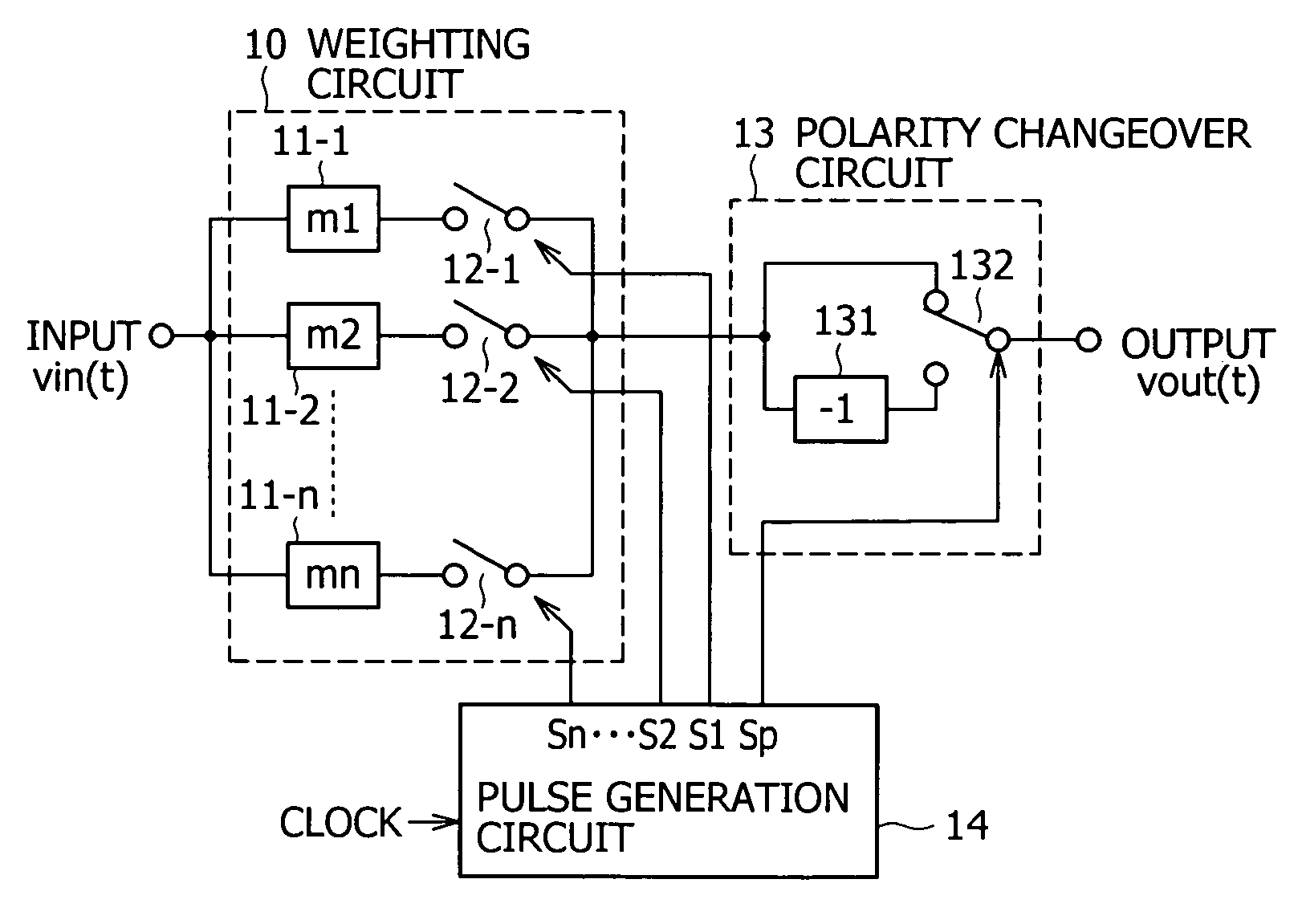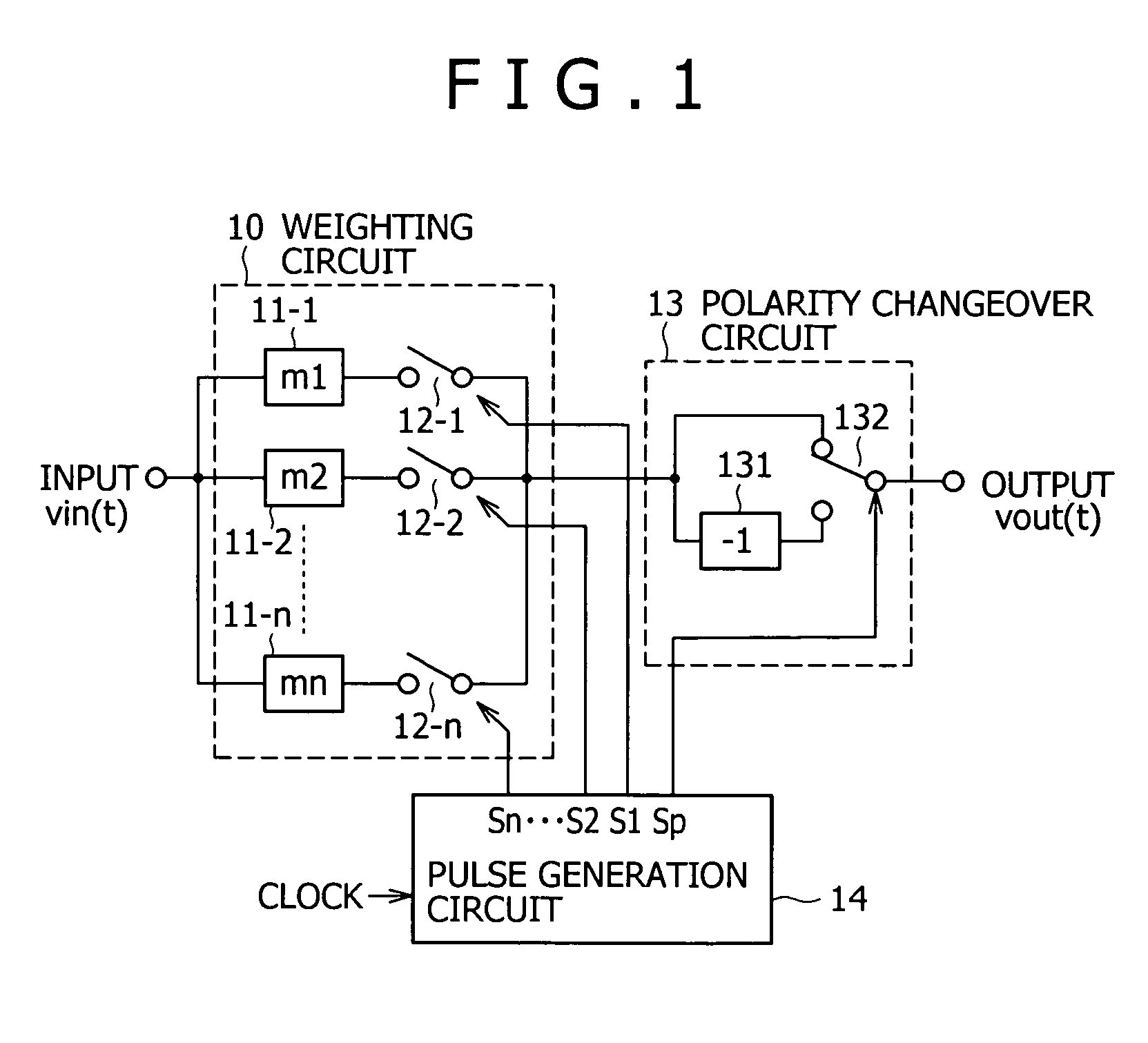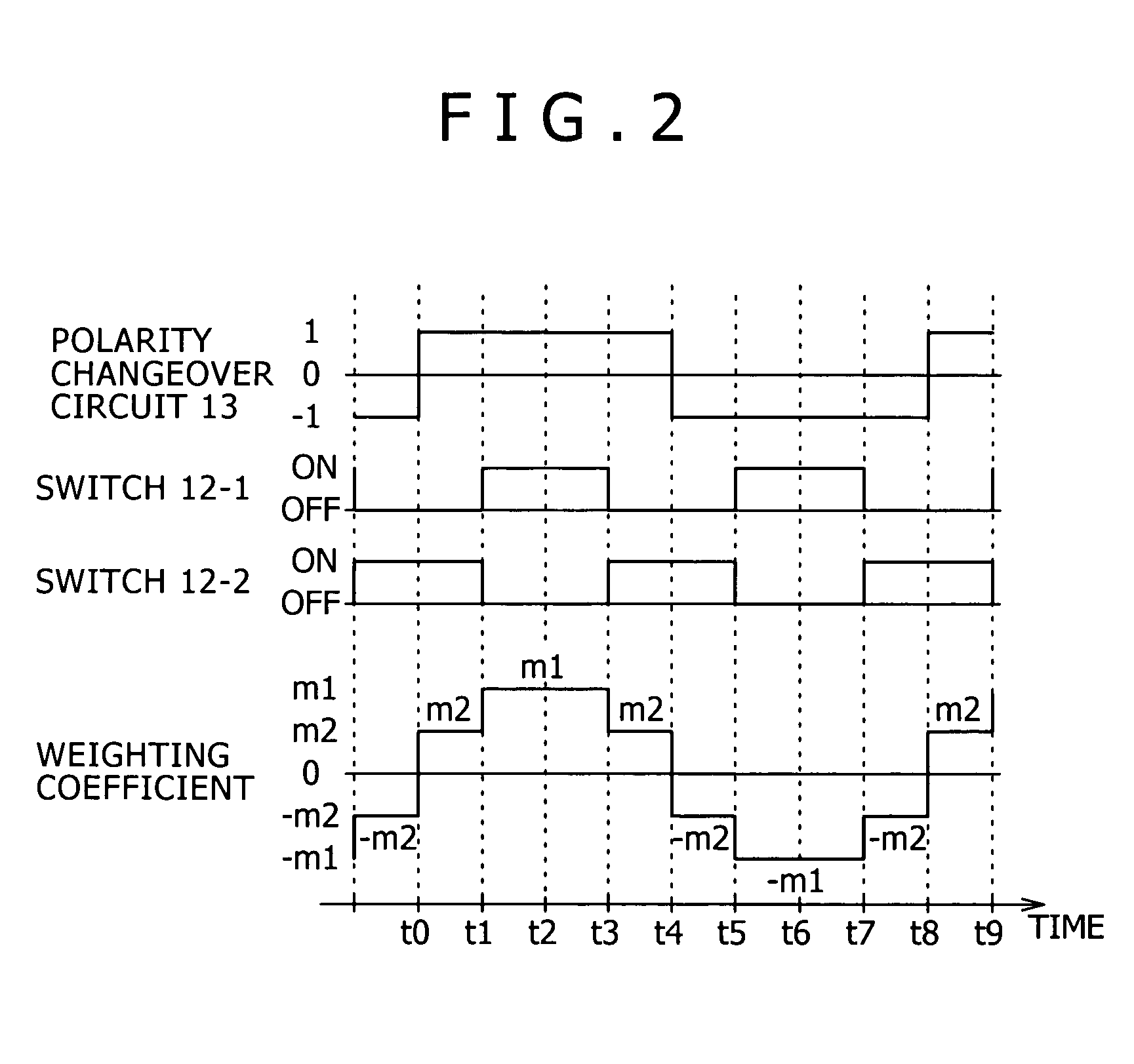Sine wave multiplication circuit and sine wave multiplication method
a multiplication circuit and sine wave technology, applied in the field of sine wave multiplication circuit and sine wave multiplication method, can solve the problems of 40 db, considerably difficult to ensure 40 db, and cannot anticipate the high degree of accuracy of arithmetic operation, so as to reduce the feed-through and the effect of an image componen
- Summary
- Abstract
- Description
- Claims
- Application Information
AI Technical Summary
Benefits of technology
Problems solved by technology
Method used
Image
Examples
example 1
CIRCUIT EXAMPLE 1
[0058] Now, particular circuit examples of the weighting circuit 10 and the polarity changeover circuit 13 are described. FIG. 14 shows a circuit example (circuit example 1) which has two addition coefficients and operates with k=4, that is, eight-time sampling.
[0059] Various methods are applicable to implement the weighting circuit 10 and the polarity changeover circuit 13. In FIG. 14, a circuit example which uses an operational amplifier OP having differential inputs / outputs is shown. Where the weighting circuit 10 and the polarity changeover circuit 13 are implemented using differential inputs / outputs in this manner, they can be implemented very simply. In particular, the weighting circuit 10 and the polarity changeover circuit 13 can be formed from a resistor network 21 including resistors R1 and R2 and a switch circuit 22 including switches SWm, SWp and SWpx. The switch SWm is used to change over the weighting coefficient, and the switches SWp and SWpx are use...
example 2
CIRCUIT EXAMPLE 2
[0062]FIG. 16 shows a particular circuit example (circuit example 2) of the weighting circuit 10 and the polarity changeover circuit 13 where k=8, that is, for 16-time sampling. FIG. 17 illustrates control of switches and weighting coefficients in the case of the circuit example 2. Switches SWp and SWpx for changing over the polarity are same as those in the circuit example 1. In the present circuit example, three different types of switches SWma, SWmb and SWmcx are used in order to change over the weighting coefficient among four different weighting coefficients.
[0063] When to provide a maximum weighting coefficient m1, the switches SWma and SWmb are on and the switch SWmcx is off. If the switches SWma are turned off in this state, then the weighting coefficient m2 is provided, and if the switches SWmb are turned off further, then the weighting coefficient m3 is provided. If the switch SWmcx is turned on further, then the minimum weighting coefficient m4 is provid...
example 3
CIRCUIT EXAMPLE 3
[0066]FIG. 18 shows a circuit example (circuit example 3) implemented by a buffer circuit equivalently having an input switch function.
[0067] Referring to FIG. 18, the sine wave multiplication circuit according to the circuit example 3 includes a buffer amplifier 23 having two inputs to which potentials as nodes N1 and N2 of a resistor network 21A formed from three resistors connected in series between an input in+ to the sine wave multiplication circuit and the ground. The sine wave multiplication circuit further includes another buffer amplifier 24 having two inputs to which potentials at nodes N3 and N4 of another resistor network 21B formed from three resistors connected in series between the other input in− to the sine wave multiplication circuit and the ground. The sine wave multiplication circuit further includes a further buffer amplifier 25 having two inputs to which outputs of the buffer amplifiers 23 and 24 are inputted, and a still further buffer amplif...
PUM
 Login to View More
Login to View More Abstract
Description
Claims
Application Information
 Login to View More
Login to View More - R&D
- Intellectual Property
- Life Sciences
- Materials
- Tech Scout
- Unparalleled Data Quality
- Higher Quality Content
- 60% Fewer Hallucinations
Browse by: Latest US Patents, China's latest patents, Technical Efficacy Thesaurus, Application Domain, Technology Topic, Popular Technical Reports.
© 2025 PatSnap. All rights reserved.Legal|Privacy policy|Modern Slavery Act Transparency Statement|Sitemap|About US| Contact US: help@patsnap.com



